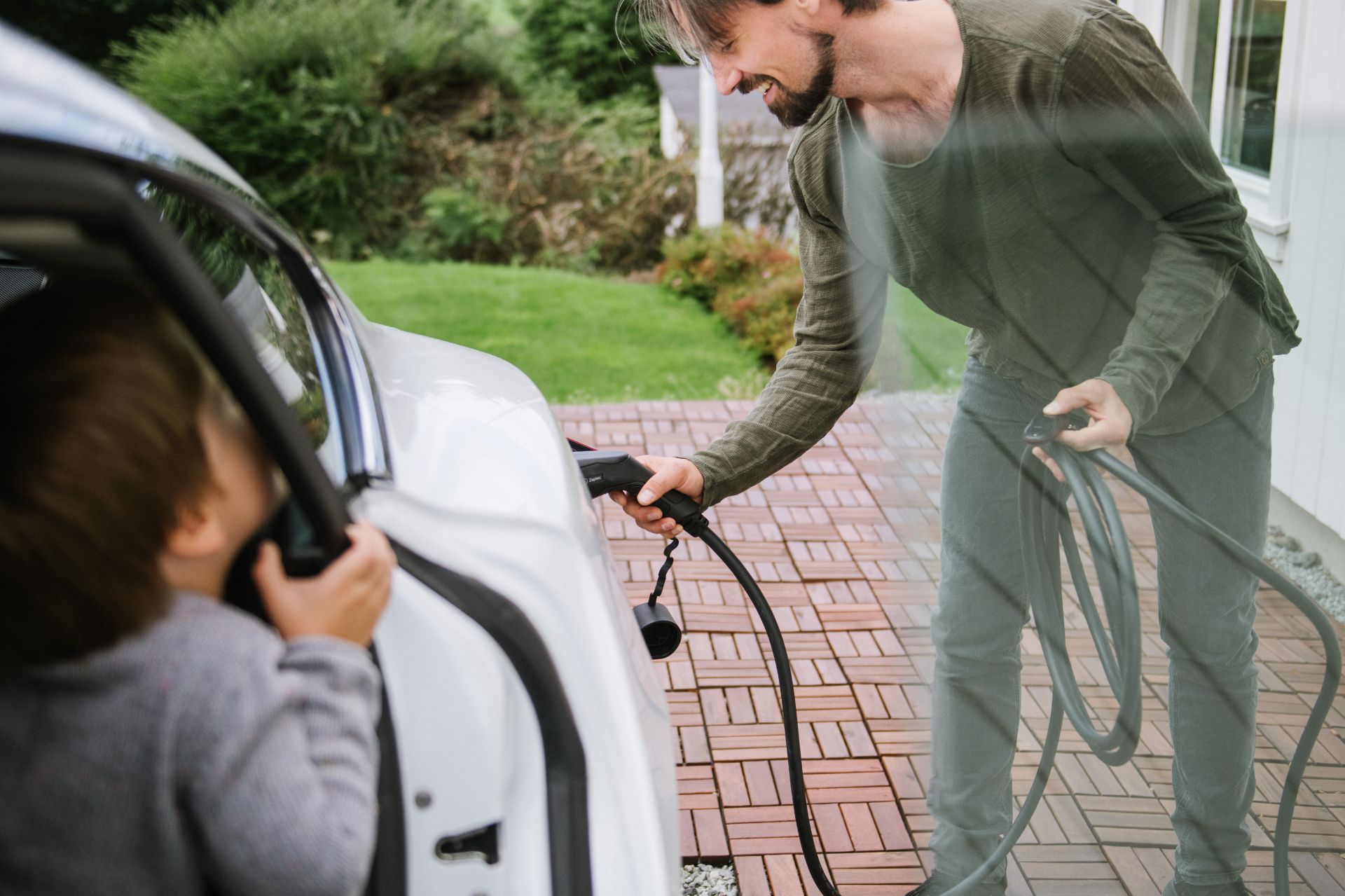Smart solutions, network capabilities and efficiency. You should base your choice of charging facilities on these factors, says the charging specialist.
If you don’t have a degree in electrical engineering, understanding the charging market for electric cars can quickly become a technical and perhaps somewhat overwhelming affair. But fortunately, you don’t have to immerse yourself in the technical details to make a well-considered choice.
What is the difference between kilowatt (kW) and kilowatt hour (kWh)? What assessments do I need to make safety-wise when choosing a charging facility? And do I really need a charger that can be connected to the internet?
If you understand some of the context around such questions, it can save you a lot of hassle and money when your housing association or co-ownership is about to invest in electric car chargers. We asked charging specialist Fredrik Hegland of technology company Zaptec what factors should be considered the most important when investing in charging facilities for the housing association.
#1: Choose a charger that takes advantage of available capacity
To find chargers that fit your housing association or co-ownership, you need to look for a charging system that can utilise the present power capacity of the building. The best charging facilities are often those that can use the existing power surplus.
“Many people think that they do not have sufficient power capacity. But what happens is that when the evening comes and people go to bed, they use much less electricity. They turn off lights and appliances, and each time they turn off an appliance, this frees up capacity. You can use this capacity for charging,” says Hegland.
Hegland emphasises that even housing cooperatives at the very limit of their capacity, when all the residents are simultaneously cooking, showering and using appliances, will have some surplus capacity in the evening.
“It is then important to choose a charging system that can take advantage of all the available power when people start turning things off,” adds Hegland.

#2: Don’t blindly look at the investment costs
When the housing association or co-ownership joins forces to invest in a charging facility for the residents, it can be easy to place too much emphasis on the first item in the quotation.
However, investing in such a system is not a one-time cost. The least expensive deals can hide extra costs, for example, that the systems cannot expand with more charging spaces, and so they’re not scalable. If useful features are lacking, there may also be a cost issue later.
If a charging system needs to be replaced after a short time because it does not take advantage of the available power, or cannot be scaled up to a size that serves all parking spaces, It is often the case that the least expensive system suddenly becomes the most expensive – because it has to be dismantled and replaced by a system that can be scaled, according to Hegland himself. This is nothing unusual, he says.
“It’s important not to look blindly at the investment cost. You need to look at what it will cost to operate the system in the future. The entrance fee may well be cheap, but what will this cost us in the future?” Hegland says.
#3: Choose a charger that takes into account power tariffs and power peaks
A system with a higher investment cost can help to save money later. This is also true for charging facilities that take into account power peaks and power tariffs. A system that takes this into account can be very cost effective.
Normally, housing associations have power agreements that aim to even out electricity use throughout the day. Here, the price of the network tariff will be based on how much electricity you use. If you use a lot of electricity just once a month, you go up a step and have to pay more for the whole month.
“If you choose a charging system that can take power tariffs into account, it will make sure that you don’t trigger any more steps upwards which, in turn, causes your electricity bill and network tariff to become expensive,” explains Hegland.
He points out that in housing associations where the load on the building is already high, it is often a new electric car that is blamed if consumption increase,s resulting in the building receiving a new electricity tariff, even though everyone contributes to the consumption.
“In the most extreme cases, for example, a single charge of one car sent everyone up to a new stage, making the network tariff many thousands of kroner more expensive.”
If you have a charging system that takes power tariffs into account, it will be easier to avoid higher tariff levels.
#4: Choose a charger that connects to the internet
There are several reasons why it is an advantage to have charging facilities that can be connected to the internet.
First and foremost, an online system can always keep the software up to date. Further, an internet connection enables remote assistance with the charging facility. This allows Zaptec and other suppliers to connect to specific chargers and figure out any problems without having to attend in person.
According to Hegland, it is mostly user errors that prevent charging, resulting in unnecessary bills for electricians, who are called in to fix problems that could actually have been fixed in a few minutes.
“If you can sort out such problems over the phone because the system is connected, it will provide a better experience. Firstly, because you don’t have to wait for someone to come out, and secondly because it won’t necessarily cost you anything,” says Hegland.
#5: Choose a charger that provides an overview of consumption and third-party integration
For large housing associations, having an overview of consumption and costs can be complex and result in a lot of work.
With the least expensive charging systems, you often don’t have the opportunity to see the consumption of each individual occupant. Thus, the costs are often evenly distributed among the apartments without taking into account that some occupants use the charging facility more than others.
If you invest in a good charging system, it will be able to tell you how much each charger has been used. Zaptec’s charging stations provide free reports on the consumption level of each apartment. Such charging stations often support third-party services that allow users to pay for their own consumption, for example, via an app. Then residents can get the admin solution that suits them best.
“This happens automatically so that the board does not have to be involved. This can save housing associations or co-ownership a lot of work,” concludes Hegland.


